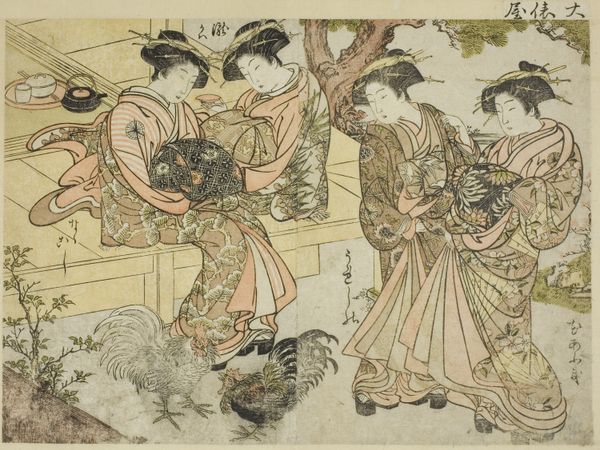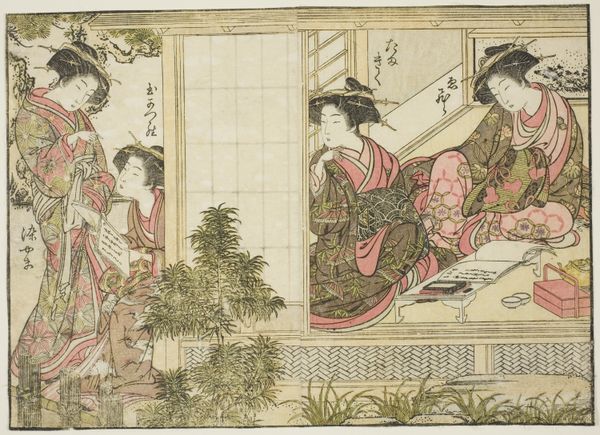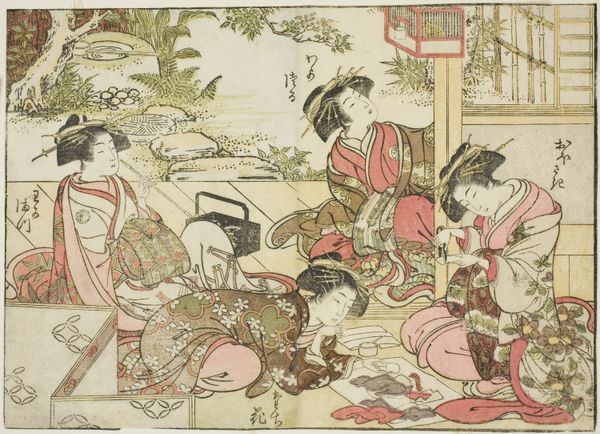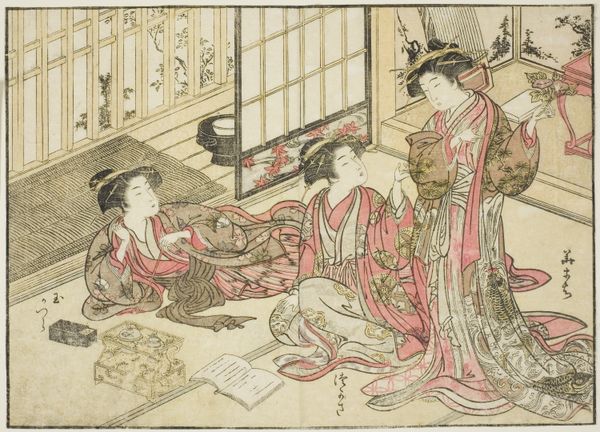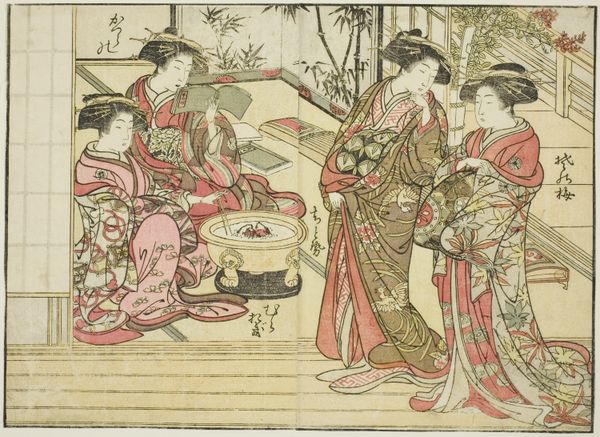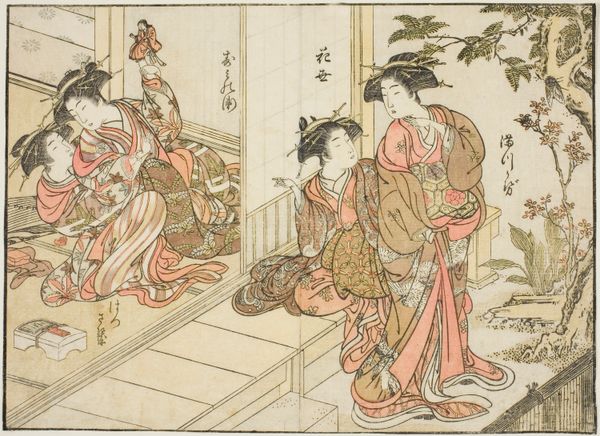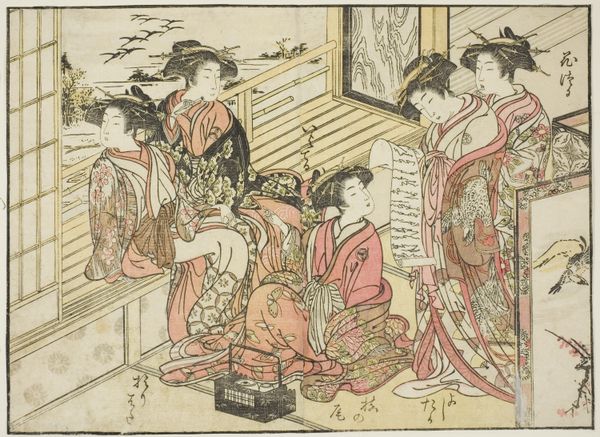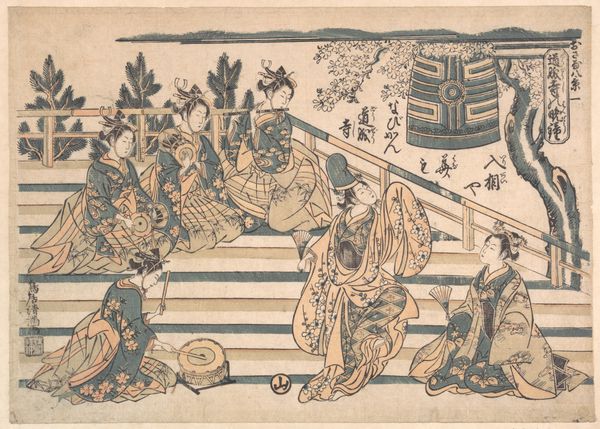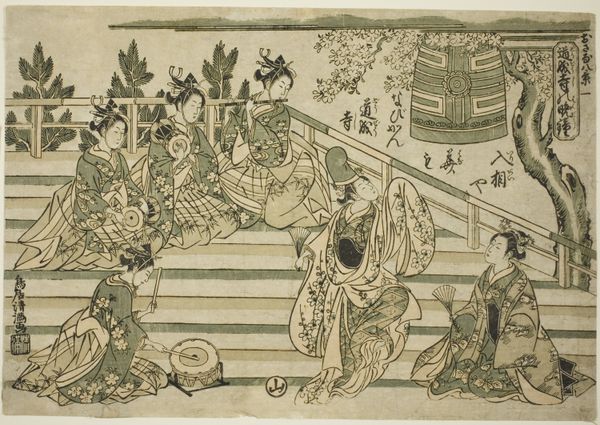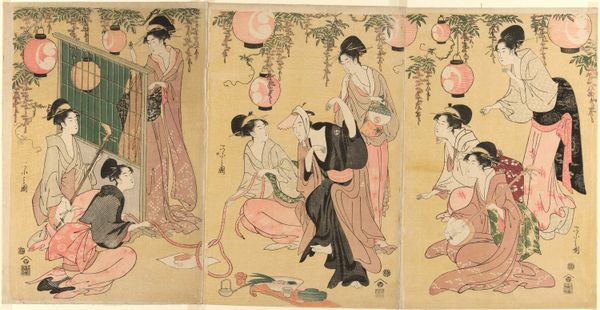
Courtesans of Matsubaya, from the book "Mirror of Beautiful Women of the Pleasure Quarters (Seiro bijin awase sugata kagami)," vol. 2 1776
0:00
0:00
print, woodblock-print
# print
#
asian-art
#
ukiyo-e
#
woodblock-print
#
genre-painting
Dimensions: 8 7/8 × 11 7/8 in.
Copyright: Public Domain
Curator: This print, "Courtesans of Matsubaya," created in 1776 by Kitao Shigemasa, offers us a glimpse into the floating world through the lens of ukiyo-e. Editor: My first impression is one of subtle beauty; the soft pastel colors, the flowing lines... a sense of serene intimacy emanates from the scene, even though it depicts a professional environment. Curator: Exactly. Shigemasa provides not just a pretty picture, but a commentary on the lives of these women within the structured world of the pleasure quarters. Their kimonos, adorned with intricate patterns, represent status and refined taste for example, and these convey much to the contemporary viewer about hierarchies within the social order. Editor: The patterns do feel almost like symbolic codes. The cherry blossoms for fleeting beauty and springtime. I am also intrigued by the small dog included there. How are animals usually regarded at the time and are included in these type of scenarios? Curator: During this time dogs where seen as loyal and keen so it might represents how loyal the costumers were for this courtesans but it may very well represent how loyal and fond this group is among themselves. It is difficult to know its true intent though Editor: The characters are engaging in every-day like behaviours like chatting and maybe they are trying to calculate profits for all we know. It grounds the entire context of that time period and shows they were just regular people like you and me, a great display that there's much to these figures beyond sexuality or beauty as the world views them from a quick first-look Curator: Certainly. Shigemasa's portrayal here attempts to normalize this profession which was heavily coded in Japan at the time but it's through those day-to-day snapshots that this work captures the complexity and nuances of Japanese Edo period culture Editor: I’m glad we looked deeper beyond initial appearances. There's a lot more weight to this woodblock-print as we explored. Curator: Agreed. Context brings to light its socio-political value which reminds me about the continuous interplay of beauty and historical narrative, allowing a far more robust reflection on our understanding of art’s public role.
Comments
No comments
Be the first to comment and join the conversation on the ultimate creative platform.
